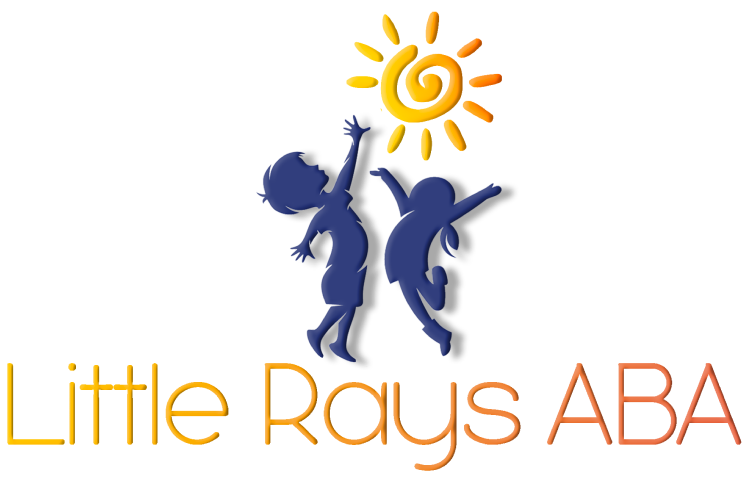Autism Spectrum Disorder (ASD) is a lifelong neurodevelopmental condition that affects communication, social interactions, and behavior. Despite growing awareness, many people still ask: Can autism be cured?
The idea of a "cure" for autism has long been debated. While there is no medical cure, early intervention and therapies—such as Applied Behavior Analysis (ABA)—can significantly improve communication, social skills, and independence. Rather than seeking a cure, the focus should be on providing the right support to help autistic individuals thrive.
In this article, we’ll explore the history of autism, debunk common myths about cures, and highlight the best approaches to supporting individuals with autism.
Understanding Autism
What is Autism?
Autism, formally known as Autism Spectrum Disorder (ASD), is a neurodevelopmental condition that is typically diagnosed in early childhood. Autism affects social interaction, communication, behavior, and can include a range of symptoms and skills. The term "spectrum" highlights the variability in the manifestation of symptoms, meaning that each person with autism presents a unique combination of characteristics.
Individuals with autism often have distinct ways of processing information and may experience the world differently from neurotypical individuals. Autism is generally diagnosed through behavioral observations rather than medical tests. While some people with autism may need significant support in their daily lives, others may lead highly independent and successful lives.
Key Characteristics of Autism
Several key characteristics are commonly observed in individuals with autism. These traits can vary significantly in severity and presentation, contributing to the spectrum nature of the disorder.
- Social Interaction Difficulties: People with autism may struggle with understanding social cues, making eye contact, and forming relationships. They might prefer solitude over social interactions and may find it challenging to initiate or respond to social exchanges.
- Communication Challenges: Verbal and nonverbal communication can be affected. Some individuals with autism may have delayed speech development or may not speak at all, while others may have advanced vocabularies but struggle with the nuances of conversation.
- Repetitive Behaviors: Repetitive behaviors are a hallmark of autism. These can include repetitive movements (like hand-flapping or rocking), insisting on sameness (such as following strict routines), and repetitive speech (echolalia).
- Sensory Sensitivities: Many individuals with autism have atypical responses to sensory stimuli. They might be overly sensitive to lights, sounds, textures, or smells, or they may have a high tolerance for pain.
- Focused Interests: Intense focus on specific subjects or activities is common. Individuals may become experts in their areas of interest and prefer to spend their time engaging in these activities.
The unique combination of these characteristics means that autism can manifest very differently in each individual. Understanding these key traits is crucial in providing appropriate support and fostering an environment of acceptance and empowerment.
Debunking the Myth of a Cure
Historical Perspectives on Autism
In the early 20th century, autism was often misunderstood and misdiagnosed. Pioneers like Leo Kanner and Hans Asperger first described it in the 1940s as a distinct neurological condition.
Decades ago, various theories about the causes and "cures" of autism emerged. Many of these theories were based on a fundamental misunderstanding of the condition. Psychoanalytic theories, for example, suggested that autism was caused by cold or unresponsive parenting. These theories, now debunked, led to stigmatization and unnecessary guilt for families.
The quest to cure autism also led to the use of dubious treatments. Some historical methods ranged from dietary changes to highly controversial and invasive procedures. Such approaches were often ineffective and, at times, harmful.
Current Understanding of Autism
Today, the understanding of autism has advanced significantly. Autism is now seen as a lifelong neurodevelopmental condition characterized by differences in social communication and behavior. The notion of a "cure" for autism is widely challenged and debated among experts.
ASD is known to be caused by a complex interplay of genetic and environmental factors, making it highly variable in its expression. Rather than seeking a cure, modern approaches emphasize management and support tailored to individual needs.
Current best practices for autism involve early screening and integrated interventions. These can include therapies designed to improve social skills, communication, and adaptive behavior. Importantly, these interventions are not aimed at "curing" autism but at helping individuals achieve their fullest potential.
The focus has shifted from curing autism to acceptance, support, and empowerment. This shift recognizes the unique strengths and perspectives that individuals with autism contribute to society.
Treatment Approaches
Behavioral Therapies
Behavioral therapies are among the most common approaches used to help individuals with autism. These therapies focus on improving social skills, communication, and behavior through structured and unstructured interventions. ABA therapy is one of the most widely recognized methods. It involves using positive reinforcement to encourage desirable behaviors and reduce undesirable ones.
Several other behavioral therapies include:
- Pivotal Response Treatment (PRT): Focuses on pivotal areas such as motivation and response to multiple cues.
- Early Start Denver Model (ESDM): Targets young children and incorporates play to build social and communication skills.
- Verbal Behavior Therapy (VBT): Emphasizes language skills by teaching the functional use of words.
Educational Interventions
Educational interventions play a crucial role in supporting children with autism. These interventions are often individualized to meet the specific needs of the student. They typically include:
- Special Education Services: Tailored educational plans, known as Individualized Education Programs (IEPs), designed by educational professionals.
- Speech Therapy: Helps improve verbal and non-verbal communication skills.
- Occupational Therapy: Aids in developing fine motor skills, daily living skills, and sensory processing.
Educational strategies rely heavily on visual aids, structured environments, and consistent routines to facilitate learning.
Medical Treatments
While there is no medical cure for autism, certain medical treatments can help manage symptoms and co-occurring conditions. These treatments often include:
- Medications: Such as antipsychotics for managing irritability and aggression, and antidepressants for managing anxiety or depression.
- Nutritional Supplements: Sometimes used to address nutritional deficiencies or gut-related symptoms, although these should be consulted with healthcare providers.
Though medical treatments can assist with symptom management, they do not address the core characteristics of autism itself. It is important to work with healthcare professionals to tailor a comprehensive treatment plan that includes behavioral and educational interventions along with any necessary medical options.
The Controversy Surrounding a 'Cure'
The idea of curing autism has spurred a significant amount of debate. This section delves into the ethical considerations and the advocacy for acceptance that shapes this complex issue.
Ethical Considerations
Ethical considerations are paramount when discussing the potential cure for autism. Advocates and researchers grapple with questions about the moral implications of seeking a cure for a condition that many regard as a fundamental part of an individual's identity.
On one hand, some argue that seeking a cure undermines the unique traits and abilities of individuals on the autism spectrum. They suggest that rather than aiming to "fix" these individuals, society should focus on creating an inclusive environment that celebrates neurodiversity.
Conversely, there are those who believe that finding a cure could alleviate the challenges faced by individuals with severe forms of autism, potentially improving their quality of life and enabling greater independence.
- Identity vs. Improvement: Balancing respect for individual identity with the potential benefits of reducing impairment.
- Informed Consent: Ensuring that individuals or their guardians fully understand any treatments and their implications.
- Quality of Life: Considering how a cure might impact the day-to-day experiences of those with autism.
Advocating for Acceptance
Rather than pursuing a cure, many advocate for acceptance and support for individuals with autism. This approach emphasizes the value of neurodiversity and focuses on providing the resources needed for people on the spectrum to thrive.
Advocating for acceptance involves:
- Education and Awareness: Promoting understanding of autism to reduce stigma and foster a more inclusive society.
- Supportive Services: Offering resources such as social skills training, educational support, and occupational therapy to help individuals with autism succeed.
- Community Integration: Encouraging inclusive practices in schools, workplaces, and community settings to ensure that individuals with autism have the opportunity to participate fully.
The controversy over curing autism reflects broader societal questions about how to best support individuals with neurological differences. Addressing these ethical considerations and advocating for acceptance are crucial components of this ongoing conversation.
Empowerment Through Support
Building a Supportive Environment
Creating an inclusive and supportive environment is essential for empowering individuals with autism. Family members, educators, and communities play a pivotal role in fostering a positive atmosphere that nurtures growth and well-being.
To build such an environment, it is crucial to acknowledge and respect the unique challenges and strengths of autistic individuals. This can be achieved through:
- Awareness and Education: Educating family members, peers, and the wider community about autism helps reduce misconceptions and promotes acceptance.
- Routine and Structure: Providing a predictable routine can significantly reduce anxiety for those with autism. Supportive environments often feature clear schedules and consistent structures.
- Sensory Accommodations: Many individuals with autism experience sensory sensitivities. Adapting the environment to minimize sensory overload—such as reducing noise levels and ensuring comfortable lighting—can improve comfort and concentration.
- Social Skills Training: Facilitating opportunities to practice social interactions in a safe and understanding setting helps build confidence and communication skills.
Encouraging Personal Growth and Success
Empowering individuals with autism involves encouraging their personal growth and recognizing their potential. Providing opportunities for skill development and celebrating achievements are key components.
Consider the following strategies:
- Individualized Approach: Tailoring support and learning opportunities to the individual's strengths and interests can foster engagement and motivation.
- Goal Setting: Helping individuals set achievable goals and celebrating milestones promotes a sense of accomplishment and self-efficacy.
- Access to Resources: Providing access to resources such as vocational training, educational materials, and extracurricular activities supports diverse pathways to success.
- Positive Reinforcement: Using positive reinforcement to acknowledge effort and progress encourages continued growth and boosts self-esteem.
- Inclusive Opportunities: Ensuring inclusion in various aspects of life—such as education, employment, and community activities—enhances a sense of belonging and purpose.
By focusing on building supportive environments and fostering personal growth, communities can empower individuals with autism to lead fulfilling and successful lives. The journey is about embracing differences and providing the right support to unlock each individual's unique potential.
Future Outlook
Research Advances
Research on autism continues to evolve, providing new insights and potential strategies for individuals on the spectrum. Scientists are exploring various areas, including genetics, neuroscience, and behavioral science, to better understand the complexities of autism. Genomic studies have identified several genes associated with autism, offering a glimpse into potential biological markers.
Neuroscientific research aims to unravel how brain structure and function differ in autistic individuals. Advanced imaging techniques are revealing insights into brain connectivity and neural pathways. These discoveries could lead to novel interventions that enhance communication and social skills.
Behavioral science remains a critical area of study. Researchers are refining therapies to make them more effective and accessible. Personalized treatment approaches are being developed, which consider the unique needs of each individual. The goal is not only to improve adaptive behaviors but also to empower individuals to achieve their fullest potential.
Hope and Progress
While the question "can autism be cured" remains complex and unresolved, there is significant hope for progress. Understanding autism as a spectrum, where each individual presents distinct characteristics, is a crucial part of this journey. Emphasizing acceptance and support can lead to meaningful improvements in quality of life.
Educational and therapeutic interventions are proving effective in enabling individuals to acquire new skills and thrive. Inclusive educational settings and tailored learning strategies are fostering academic and social development.
Community awareness and acceptance are growing, reducing stigma and creating supportive environments. Advocacy groups and policy changes are also playing a vital role in promoting the rights and well-being of autistic individuals.
In essence, the quest is not solely about finding a cure but about fostering an environment where autistic individuals can lead fulfilling lives. Ongoing research, combined with societal efforts to support and accept, paves the way for a future where every individual can flourish.
Conclusion
While autism cannot be cured, the right support can make a world of difference. Applied Behavior Analysis (ABA) therapy has been proven to help autistic individuals build communication, social, and daily living skills.
At Little Rays ABA, we believe in empowering autistic individuals by providing personalized, evidence-based therapy tailored to their needs. Our compassionate team is here to support your family every step of the way. Contact Little Rays ABA today to learn how we can help your child thrive!
FAQs
Can autism be cured completely?
No, autism is a lifelong neurodevelopmental condition. While there is no cure, therapies like ABA can help individuals develop essential skills and lead fulfilling lives.
What are the best treatment options for autism?
Applied Behavior Analysis (ABA), speech therapy, occupational therapy, and social skills training are among the most effective treatments for autism.
Why do some people seek a cure for autism?
Many parents and caregivers hope for a cure due to the challenges autism can present. However, experts emphasize acceptance, support, and therapy to help autistic individuals succeed.
Sources:
https://www.chla.org/blog/experts/research-and-breakthroughs/future-autism-treatment
https://pubmed.ncbi.nlm.nih.gov/19009353/
https://www.nichd.nih.gov/health/topics/autism/conditioninfo/treatments/medication-treatment
https://www.fda.gov/consumers/consumer-updates/be-aware-potentially-dangerous-products-and-therapies-claim-treat-autism
https://www.bbc.com/news/uk-england-london-68759263
Unlock Your Child's Potential with Expert ABA Therapy!
At Little Rays ABA, we provide compassionate, evidence-based ABA therapy to help children with autism thrive. Our personalized approach fosters growth in communication, social skills, and independence.
Get In Touch With Us Today to Get Started With ABA Therapy!
Related Posts
MENU
GET IN TOUCH
7117 San Salvador Dr Boca Raton, FL 33433
3200 Collins Ave Miami Beach, FL 33140





